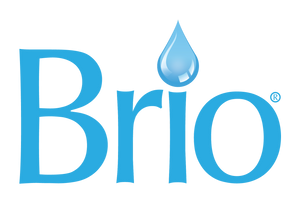Having safe drinking water in your home might be something you take for granted. You turn the faucet, and clear, clean water comes out — delicious. However, your water might not be as clean as you think. Contaminants called PFAS are invisible and undetectable without specialist tests, and could be putting your health at risk.
The U.S. government announced regulations in 2024 that would require all public water providers to comply with specific PFAS regulations by 2029. That deadline has now been pushed back until 2031, raising concerns for environmental groups and the public.
Here’s what we know about the ruling so far and what you can do to keep water safer and cleaner in your home.
PFAS, PFOA, and PFOS Explained

PFAS stands for Per- and Polyfluoroalkyl Substances. It’s an umbrella term for what’s also known as “Forever Chemicals,” various molecules found in everyday objects, from non-stick pan coatings to fire-retardant materials.
There are more than 7 million substances classed as PFAS, and they break down incredibly slowly. This causes them to build up in the environment, including the water supply, and unfortunately, our bodies. It’s problematic because these chemicals have been linked with various health concerns, including an increased risk of cancer.
PFOA means Perfluorooctanoic Acid, while PFOS is the abbreviation for Perfluorooctanesulfonic Acid. These are both specific types of PFAS known to be carcinogenic and possibly linked to other health problems, such as reduced immune function.
Eliminating PFAS from drinking water has been a U.S. government initiative for several years under the PFAS Strategic Roadmap.
Maximum Contaminant Levels and Concentration Goals

In 2024, the Biden-Harris administration announced that, as part of this Roadmap, public water systems would be held to the first-ever legal, national drinking water standard. The goal, with a compliance deadline of 2029, was to protect communities from the potential dangers of PFAS and work toward reducing cancer rates nationwide.
The legal standard includes two aspects:
1. Maximum contaminant levels (MCL) of four parts per trillion for the most dangerous PFAS and 10 parts per trillion for others.
2. A maximum concentration of PFAS that can be regularly demonstrated to be under the relevant MCL limit.
In other words, water suppliers will have to reduce the volume of PFAS in water and consistently prove that they’re adhering to this standard.
Changes to Rules and EPA Extension of Compliance Date - And What This Means
In August 2025, the compliance deadline of 2029 was extended by the current administration to 2031. These extra two years have been offered as “common-sense flexibility” to allow water suppliers, particularly in rural communities, to integrate the relevant purification technologies to comply with the MCL goals.
The Environmental Protection Agency (EPA) has also announced that it is rescinding the requirement to meet the MCL goals of 10 parts per trillion for the potentially less hazardous PFAS. These include:
• Perfluorohexane sulfonic acid (PFHxS)
• Perfluorononanoic acid (PFNA)
• Hexafluoropropylene oxide dimer acid (HFPO-DA), also known as the GenX chemical
• A combination of any of the above three chemicals with perfluorobutane sulfonic acid (PFBS)
Dealing With PFAS at Home

If you’re concerned about PFAS and other contaminants in your water, it might be time to join the 91% of Americans using a water filter at home. But what type of water filtration is effective against PFAS?
The EPA confirms that one of the best filtration systems for eliminating PFAS is a reverse osmosis (RO) system. Osmosis is a scientific process in which water molecules move from an area of high concentration to an area of low concentration.
For example, if you have very salty water next to clean water, the water is more concentrated in the non-salty liquid. Osmosis takes place when water molecules move into the salty water, thereby balancing out the solution.
Reverse osmosis uses pressure to overcome this process, forcing water molecules away from contaminants to create a higher volume of pure, clean water.
Brio’s undersink RO water filtration systems use pressure and incredibly fine membranes to achieve this process, trapping and removing contaminants as small as.0001 microns — including PFAS. The same technology is used in Brio’s 4-stage RO bottleless water coolers, meaning you can have safe, great-tasting water from the faucet or your water dispenser, at home or at work.
You can’t control government policy or backsliding on water safety initiatives. But you can take action to protect your family by investing in effective water filtration systems. Contact Brio Water to learn more or browse our collection online.




